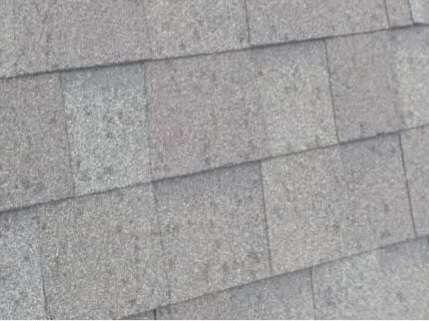As an insurance agent, I often…

As an insurance agent, I often get questions from homeowners about those dark streaks or spots on their roofs - what we call "roof freckles." These marks are usually caused by a type of blue-green algae known as Gloeocapsa magma. While mostly cosmetic, they can be a sign your roof needs a little extra attention.
Why are roof freckles so common?
Several regional factors contribute:
High Humidity: Louisiana’s warm, humid climate, for example, creates the perfect environment for algae growth on asphalt shingle roofs.
Shade and Moisture: North-facing parts of your roof or areas shaded by trees retain moisture longer, encouraging algae to spread.
Limestone in Shingles: Many asphalt shingles contain limestone, which serves as a food source for algae.
Copper Loss Over Time: Some shingles are treated with copper granules to prevent algae growth, but after 10–15 years, this protection can wear off.
Windborne Spores: Algae spores travel easily through the air, so even if your roof is clean now, it can still be affected later.
Debris Build-Up: Leaves, pine needles, and other debris can trap moisture, helping algae take hold.
While these streaks don’t always impact your roof’s structural integrity, they can lead to:
Decreased Curb Appeal: Stains can make your home look older or poorly maintained.
Moss or Lichen Growth: If left untreated, algae can pave the way for moss or lichen, which can cause more serious issues by holding moisture and damaging shingles.
So, what can you do about roof freckles?
Schedule a Professional Roof Cleaning: Roofing professionals use specialized, roof-safe treatments to remove algae without causing damage.
DIY Caution: If you decide to tackle it yourself, a diluted bleach solution can help—but be extremely careful to avoid personal injury or damaging the roof and landscaping.
Prevent Future Growth:
Trim back trees to increase sunlight and airflow.
Keep gutters clean to promote proper drainage.
Prevent standing water on or near your roof.
When it’s time for a replacement, consider algae-resistant shingles with copper or zinc granules.
If you notice these black marks on your roof, don’t panic ... it’s a common issue in humid climates. However, it’s still a good idea to get a professional roof inspection to assess the extent of the growth and ensure it hasn’t led to any bigger problems. Maintaining your roof helps protect your home ... and from an insurance perspective, it can even help prevent claims down the road.
